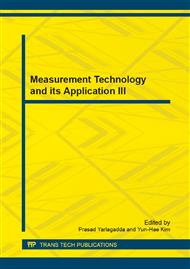p.1662
p.1667
p.1671
p.1675
p.1680
p.1684
p.1690
p.1694
p.1698
Optimization of Tensile Properties Based on Spin Tool Shoulder Geometry for Friction Stir Welded 6061 Aluminum Alloy
Abstract:
This study reported the statistical optimization based on Taguchi designed experiments to improve the tensile properties of 6061 Aluminum alloy by the friction stir welding (FSW) experiments. The morphology and the structure of the friction stir welded experiments were characterized by scanning electron microscopy. Based on analysis of variance, the impacts of control factors have been identified for the tensile strength of 6061 aluminum alloy by friction stir welding. Experimental results revealed that the defect free butt joints could be obtained by cylindrical-screw type of tool shoulder and the joints made with a cylindrical-screw type resulted in better tensile properties compared to the other two shoulder geometries. Furthermore, it was clear that the tensile properties are greatly improved by friction stir welded experiments in the Taguchi design, and these findings have achieved the desired values in regard to the friction stir welded Experiments. The proposed procedure was applied at friction stir welded experiments, and the implementation results demonstrated its feasibility and effectiveness to enhance the tensile properties by FSW .
Info:
Periodical:
Pages:
1680-1683
Citation:
Online since:
June 2014
Authors:
Price:
Сopyright:
© 2014 Trans Tech Publications Ltd. All Rights Reserved
Share:
Citation:


